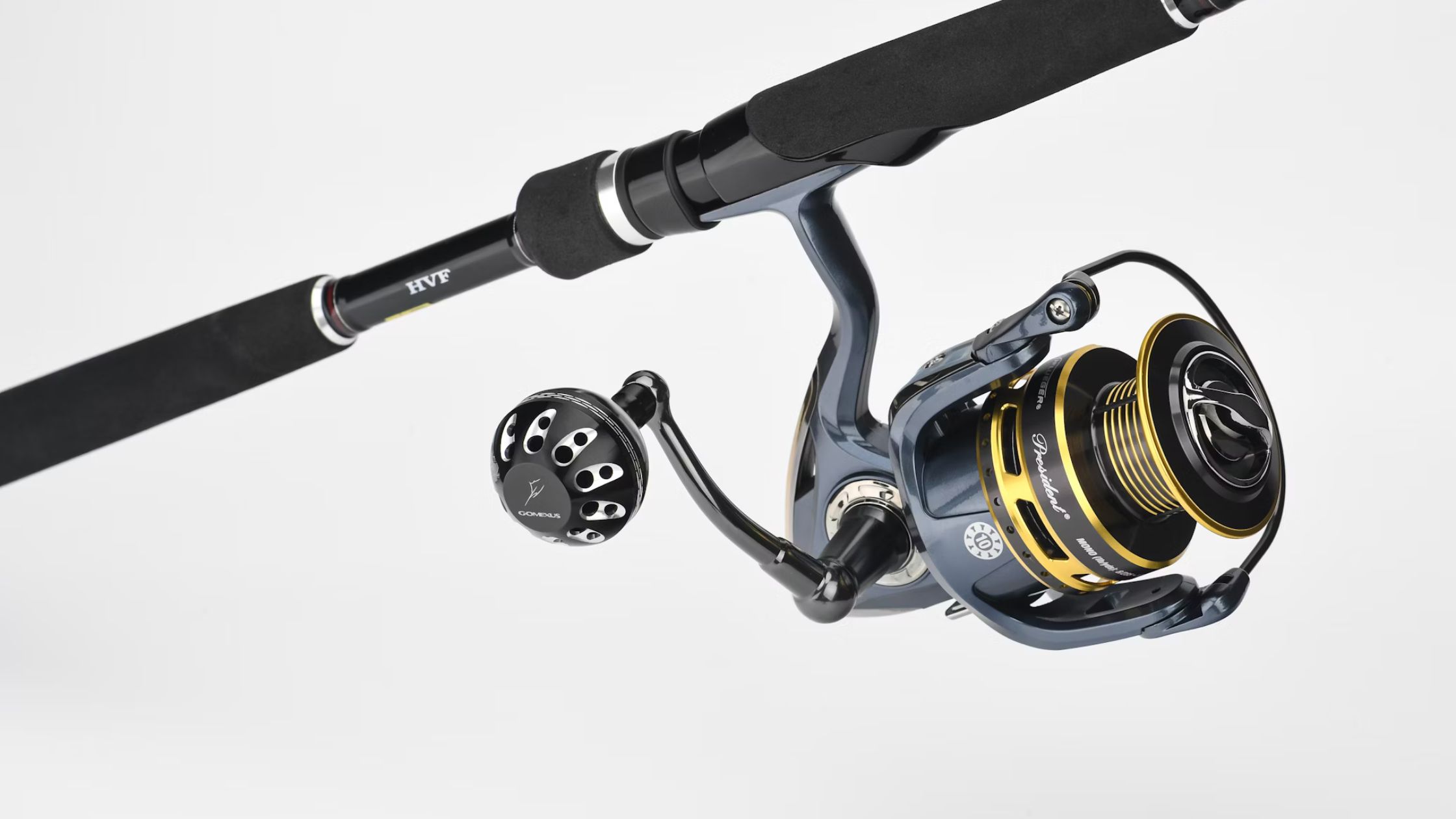The large number of options and insufficient knowledge make the selection process difficult. Before deciding which spinning reel to buy, there are a few essential things to consider. In this article, we will look at the main Spinning Reel Design points that affect the characteristics of the fishing rod.
Spinning Reel Design
The structure of a spinning reel is quite complex, but the mechanism can be easily disassembled and does not require frequent maintenance. Piscifun reels are known for their durability and smooth performance, making them a popular choice among anglers.
Components:
- brake with switch;
- spool;
- roller;
- transmission mechanism;
- handle;
- line layer.
To make the right choice, you need to know the necessary parameters of spinning reels. Sometimes, you should pay attention to corrosion resistance and the gear ratio.
Main Characteristics of Spinning reels.
Let’s take a closer look at the main characteristics that distinguish spinning reels.
Dimensions
If you need to choose the optimal reel size, you should do so depending on the fishing line size that will be used most often. The lighter the line, the smaller the reel should be. You should also check the numbers on the reel to ensure they are correct (or product chart).
Piscifun is the best brand for fishing.
The following important factor when choosing a reel depends on the type of fish the fisherman plans to catch most of the time. It will help you know what kind of reel is required to catch that particular species. There is no need to spend much money on a corrosion-resistant reel unless you plan to fish in brackish or salt water.
You need to spend some time figuring out which specific species require a reel. The method of fishing is also an essential factor to keep in mind when purchasing. Fishermen fishing from a boat will have a movement advantage when fighting fish. The ability to move freely with a struggling fish reduces stress on the reel. On the other hand, fishermen who fish from shores or piers must select gear suitable for this method.
Spinning fishing reels are generally divided into small, medium, and large reels.
- Small reels are suitable for catching fish such as perch, chub, and asp and for light fishing in ports, rivers, and lakes.
- Mediums are ideal for lakes, bays, boat fishing, and fishing for species such as walleye and pike.
- Large ones are best suited for rock and boat fishing. They are great for salmon, tuna, catfish, and trout.
Body and Weight
The coil body can be made of aluminum or graphite—sometimes a combination of both materials. As expected, aluminum cases are more robust than graphite and don’t flex as often. On the other hand, graphite cases are lighter. It dictates the choice or preference between a stronger or lighter reel. Generally, brackish or saltwater conditions require the use of a higher-quality reel compared to fresh water.
Saltwater reels are corrosion-resistant thanks to materials such as anodized aluminum, graphite, and stainless steel and cost much more than freshwater reels. The highest-quality freshwater reels usually have aluminum bodies. However, if you plan to fish in saltwater, a graphite reel will be better suited for saltwater. In any case, you need to ensure the case is well-designed. It means that all mechanical parts must move smoothly and without jerking backward.
The importance of weight when choosing a reel depends on fatigue. Obviously, the less weight an angler puts on the hand when fishing with a lighter reel, the less stress the fisher will experience. It is a profitable option for people who spend a lot of time fishing. Long hours of fishing can be very tiring, especially if the reel you are using has extra weight. Whether fishing on the shore, offshore, or in a local pond, a fisherman will need a reel that is lightweight and easy to use. Lightweight reels are easy to use and reduce wrist fatigue. The lightweight reels are also easy to use, have good balance, and are very comfortable for long days on the water.
It is essential to make sure that when comparing reel weights, you are comparing reels of the same size.
Gear Ratio
Gear ratio refers to the number of revolutions. A reel with a 4:1 gear ratio will spin four times for every turn of the handle. A 4:1 reel is usually slow. On the other hand, a 6:1 ratio is a high-speed reel that is better suited for medium to small fish. If you have the budget to buy several reels with different gear ratios, this is the best way to cover all situations optimally. However, if your budget is tighter and you can only buy one reel, you should choose a medium-speed model (5:1 ratio).
Reel Quality
The quality of the reel will largely depend on the price. As a general rule, the more expensive the reel, the higher the quality and durability of its components. The internal components of a reel are essential to consider when making a purchasing decision. A spinning reel with high-quality internal parts will outperform a low-quality one and last many years. But the inexperienced angler doesn’t need to spend much money on a reel, especially if he plans to hit the water several times a year.
Reel Maintenance
While hunters clean and lubricate their firearms, fishermen service their reels. A reel is a complex mechanism subject to various impacts and contamination during operation. The smooth operation of the mechanism during fishing depends on preventive maintenance. If the coil is used two to three times a year, it requires minimal attention. However, intensive use leads to rapid wear. When actively fishing for fish or transporting gear, the reel is subjected to various impacts, and the hooks exert force. Equipment often ends up on the ground when fishing and different materials get caught in the gear. Sand and soil contaminate the coil and can damage the gears.
First, external cleaning of dirt and dust is carried out. Disassembly must be carried out in a prepared workplace. The mechanism has many parts; laying them out sequentially is better. The spool is removed, the handle is disconnected, and the locking ring and gear are removed. The nut is unscrewed, the rotor is removed, the housing is disassembled, and the coil wall is removed. The mechanism is cleaned and lubricated. After assembling the product, it must be checked for functionality.
Conclusion
Now that you understand the reel’s operation principle and main characteristics, it will not be difficult for you to choose the best option from the wide variety available on the market. Choose and maintain your reel responsibly, and it will serve you for a long time.











